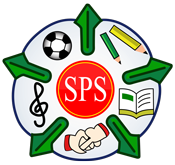History – Chronological Understanding
Subject Key Objective Progression & Development by Year Groups
The following is a guide to help you understand your child’s progression through school.
All lessons are differentiated. This means teachers plan activities that enable the objective to be learned by all children including those who will find the objective challenging, those children who with hard work will secure good progress and those children who can tackle extra stretch and challenge in this subject.
Intent, Implementation and Impact
The curriculum is designed with our pupils and the Swinemoor community in mind.
It enables children to access and enhance their understanding of their home, their town and the wider community, developing their cultural capital and giving them opportunities and choices about their future and their impact as they progress through their school career and beyond.
This will help them become successful members of modern British society, preparing them for the challenges and opportunities.
HISTORY – Chronological understanding

EYFS: “To talk about past and present events in their own lives and in the lives of family members.”
KS1: “They should know where the people and events they study fit within a chronological framework and identify similarities and differences between ways of life in different periods.”
KS2: “ Pupils should continue to develop a chronologically secure knowledge and understanding of British, local and world history, establishing clear narratives within and across the periods they study.”
EYFS:
House (T1)
Asked (T1)
Looked (T1)
KS1:
Hour (T2)
Parents (T2)
Father (T2)
KS2:
Remember (T3)
Soldier (T3)
Community (T3)
Children may demonstrate an understanding of different culturally significant events and draw on the importance of how the world has changed over time.
They will relate historical events to the impact not only to their immediate lives, but in a wider setting such as community, British values and cultural relevance, drawing on their understanding to develop context of socio-economic change over the years in both Britain and the World.
What will be made, produced, performed, or published?
Children will produce a piece of portfolio work, demonstrating their knowledge and understanding.
They will participate in a sequence of lessons with a historical focus, producing a range of evidence including written work, role play and reflective dialogue.
What knowledge will the children have embedded?
Children will be able to recall specific historical events, appropriate to age.
They will demonstrate an understanding of the key moments within the event, the historical people involved and the impact it has had on current British society and the World.
What retention may be demonstrated?
Here are some example questions that may be used to assess children’s understanding.
EYFS: How are things different now from when you were a baby?
KS1: How are your toys different to the toys that your parents/carers had when they were your age? Why do you think they are different?
KS2: Can you place these key events from WWII on a timeline?
• Start of WWII
• D-day
History – Chronological Understanding – Primary Curriculum
Foundation – Chronological understanding
Pupils begin to answer questions about what happens next.
Year 1 – Chronological understanding
Pupils recognise the difference between present and past in their own and other people’s lives.
Year 2 – Chronological understanding
Pupils show their developing sense of chronology by using terms concerned with the passing of time.
Year 3 – Chronological understanding
Pupils show their developing understanding of chronology by their realisation that the past can be divided into different periods of time.
Year 4 – Chronological understanding
Pupils show their increasing understanding of chronology by recognising that the past can be divided into different periods of time.
Year 5 – Chronological understanding
Pupils begin to show factual knowledge and understanding of aspects of the history of Britain.
Year 6 – Chronological understanding
Pupils show factual knowledge and understanding of aspects of the history of Britain and the wider world.
Mastery – Chronological understanding
Pupils use factual knowledge and understanding of the history of Britain and the wider world to identify changes within and across different periods.

This collection of short films and resources will help you understand your child’s progression through school.
The curriculum film resource has been broken down by subject area initially and then by topic area.


